Checking out the Black Lodge after its long-anticipated return, article by Omar Sullivan
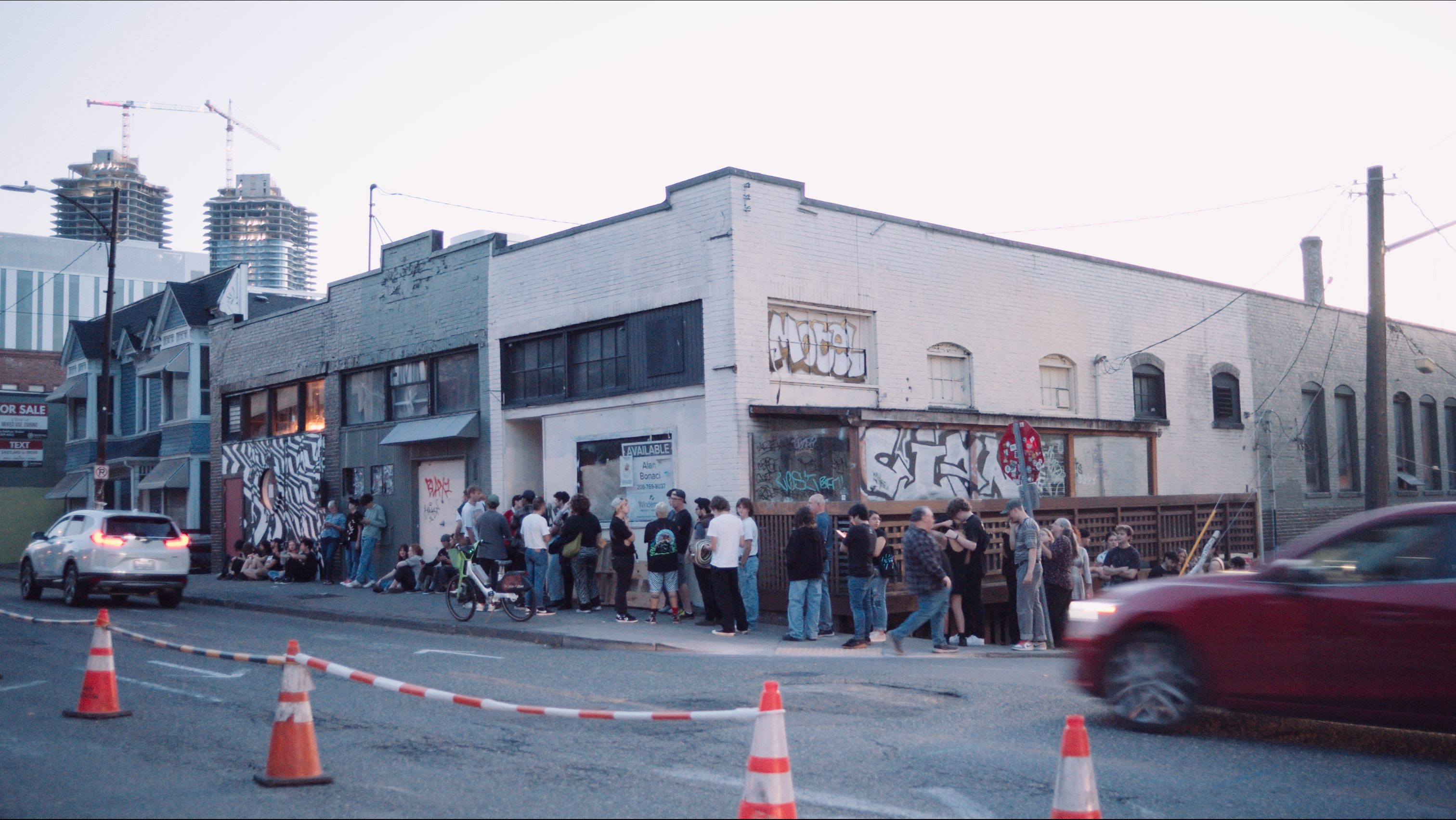
Back in Black
written by Omar Sullivan, former Civic Engagement Intern 2023
Checking out the Black Lodge after its long-anticipated return
My first punk show was a grimy, chaotic mess, and I loved every second of it. I was sixteen and still hadn’t quite nailed the “look” yet, dressed half in my Black Flag tee and half in gym shorts and sneakers. My friend took me to the venue, a now defunct spot off Broadway known as “The Nuthole.” We both forgot ear plugs, so he instructed me to ball up paper towels, spit on them to get them wet, and stick them in my ears instead. Looking back, we totally could have just used water instead of spit, but at the time it was an appropriately gross workaround.
“I still remember the second punk show I ever went to” admittedly doesn’t have quite the same ring to it as “the first,” but it had a much larger impact on my involvement in the punk scene as a teenager. I went to the Black Lodge, a completely unmarked venue that you had to “ask a punk” to get its location. But despite its unassuming facade, the interior was absolutely nuts, with hieroglyph-covered murals all over the wall of the hallway leading to a stage beneath giant paper mache stalactites. That show was my first time being in a mosh pit, and I remember it being equal parts terrifying and thrilling. I discovered the Black Lodge at the perfect time, around when I started getting into really extreme music, and it rapidly became my go-to place to see local metal and hardcore bands.
As a teenager, I went to more shows at the Black Lodge than at any other Seattle venue combined. I think that smelling all the cigarette smoke outside of the venue permanently altered my brain chemistry, as I still get a pavlovian response where I think about punk shows any time I smell cigarettes. Even though almost everyone at those shows was significantly older than me, the Black Lodge still had a strong “all-ages” ethos. Having a space like this was huge because it meant that teens like me who wanted to get into punk and metal would never be gatekept out of the scene on account of our age.
The Black Lodge obviously meant a lot to me. Which is why I was worried when it seemed like it was closing its doors for good during the pandemic. I kept checking its social media to see if there was any news, but all I could find was the last update that it was looking for donations to stay afloat. I tried to hold out hope that it would reopen once COVID was over, but the radio silence wasn’t a good sign. And then the Vera Project announced that it was reviving the venue.
I ended up interning at Vera around the time that the Black Lodge reopened. I actually found out about the job while investigating how the reopening process was coming along. So it feels like kind of a full-circle moment to be writing about it now! I wanted to check out what they’d done with the place and see how it compared to the old Black Lodge, so I went to a couple of shows there. Here’s what it’s like:
While the outside of the venue is more or less the same, the inside couldn’t be more different. They completely flipped around the functions of the two sides of the venue. While the old Black Lodge was half-punk venue, half-living space, the old Lo-Fi Lounge is now the new venue. The old bedrooms have been converted into a practice space for local bands. The decor inside is completely different now as well. The stage has been painted like the Twin Peaks venue where the Black Lodge derives its namesake. I saw the old Victory Lounge sign displayed on one of the walls, a fitting tribute to the venue that used to be next door.
Woah, dude, is that a Twin Peaks reference?
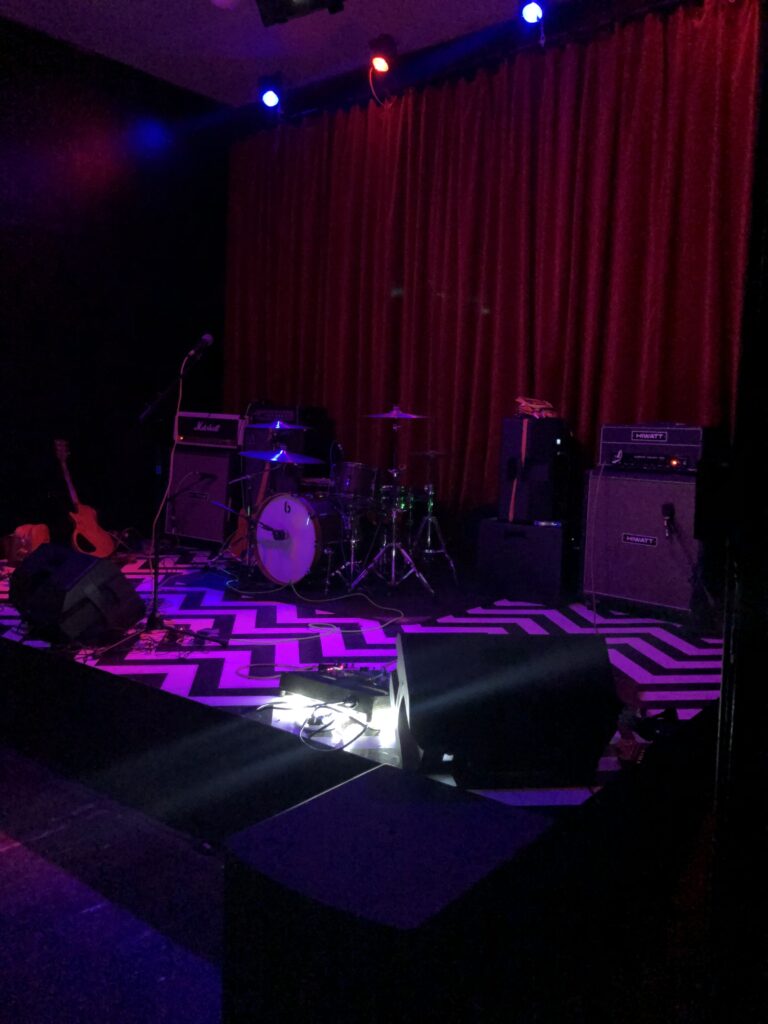
A proverbial “passing of the torch”
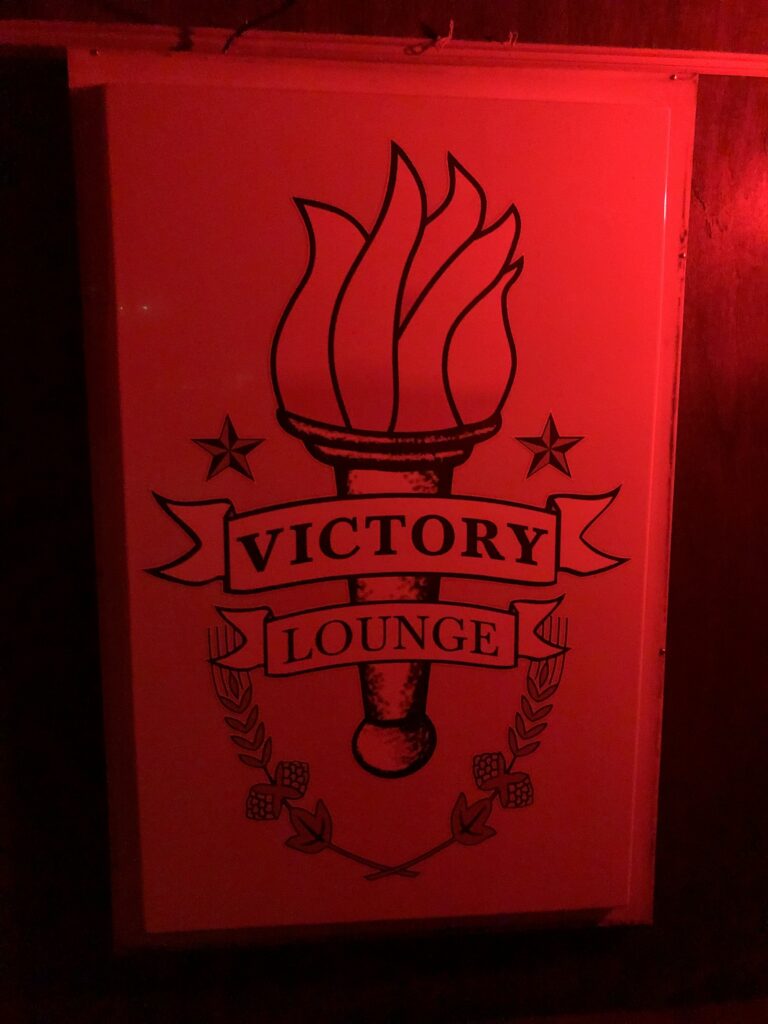
There’s also a record store inside the venue now (!!!) It’s called Nellis Records. I spoke with the owner, Brad Tilbe. He said that he wanted to curate the record collection to be more niche than the kind of stuff at most record stores, both to be more authentic to his taste, and to draw in people looking for something different. He had some interesting plans for the future of Nellis Records, including performances and interviews with musicians inside the record store area. I was immediately drawn to the collection of books he had at the back of the record store. I took a look through a book of poems by Genesis P-Orridge, one of the pioneers of industrial music, a genre very near and dear to my heart. I also read part of a book on secret societies. The collection of books was also curated by Brad, who said that he was especially drawn to esoteric, occult, and spiritual texts.
Nellis Records
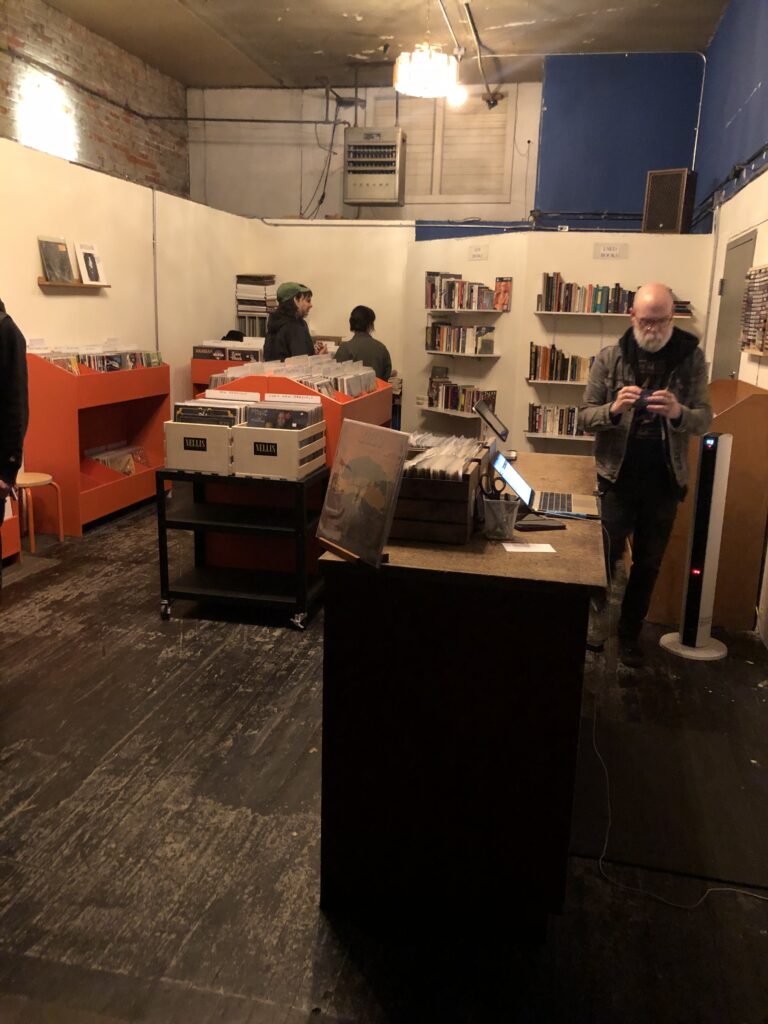
I’d be remiss not to mention the music itself. Both of the shows that I went to were super fun. The bands I saw leaned more towards the rock/indie side of the punk spectrum. So I haven’t been able to go in a mosh pit there yet, but I will as soon as I get the opportunity. Looking at the lineups of future shows, it seems like there will still be lots of extreme music at the Black Lodge, but there will probably be a wider variety of genres than there used to be.
Star 99 tearing it up
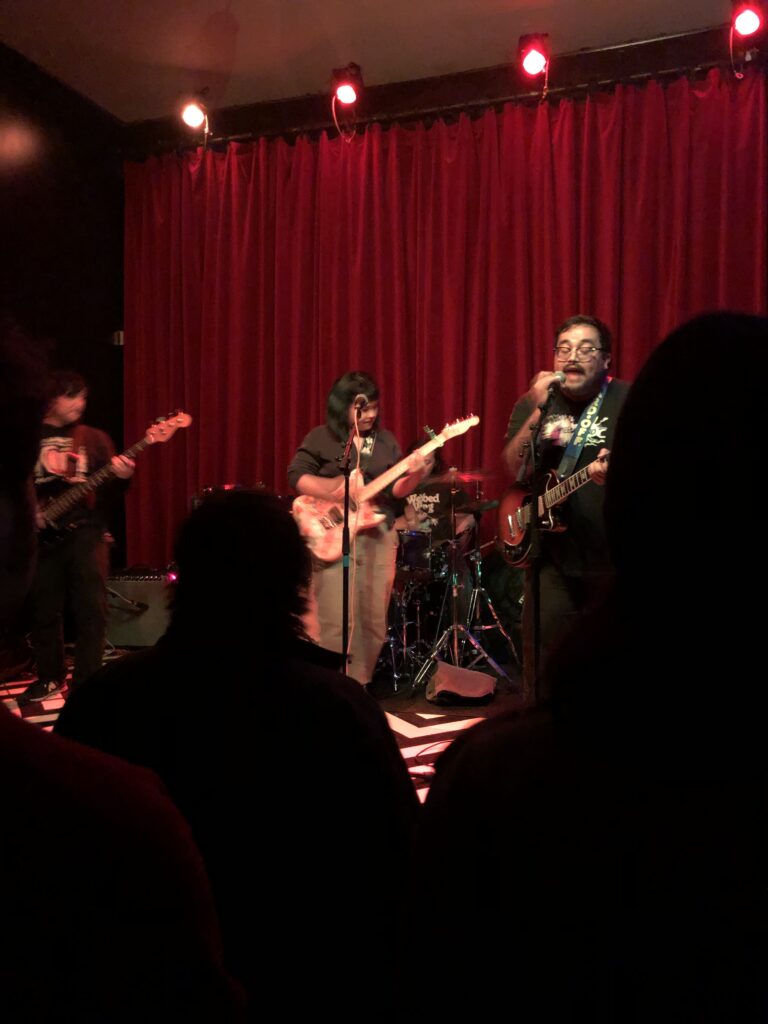
It was also interesting seeing the Black Lodge from an inside perspective this time. When I used to go there, I was vaguely aware that some people lived in the space, but other than that had no knowledge of how everything was organized. Speaking to people behind the scenes at Vera, it seemed like they wanted to stay true to the Black Lodge’s values with how they managed the space. Compared to Vera’s main spot, they wanted the Black Lodge to be organized more loosely and experimentally. “If someone wants to do a cool fucking thing, we just let them in and they do it,” was the guiding philosophy. They wanted more murals and art in the space in the future, and were open to any artists approaching them with ideas.
However, they also knew that they had to do some things differently this time. JJ, who used to be part of the Black Lodge’s collective and now works at Vera, essentially pulled the Black Lodge out of debt by booking over 60 shows while they lived there. When the old collective passed the reins to Vera, there were a lot of fire and safety hazards with the space. Vera taking over and changing the layout seemed like a way to get everything up to code, providing a solid foundation for more fast-and-loose organizing in the future.
Overall, I was surprised because I expected to feel more nostalgic going to the new Black Lodge. But it really did feel like a completely new space. This isn’t necessarily a bad thing though. As much as the old Black Lodge meant to me, I think that its transformation into something different means that my relationship with it can transform and evolve as well. Even at the old space, they were constantly changing the murals on the walls, and the collective that lived there was more of a revolving cast of people than a fixed group. So I think the most fitting way to treat the Black Lodge is to embrace the constant change and transformation, while keeping the most essential parts of it – its values and spirit – alive and intact.
If the Black Lodge meant as much to you as it did to me, I encourage you to check it out again now. I think that you’ll like what you find.
Recent Posts
-
July 24, 2024
🚨 WE’RE HIRING- EDUCATION MANAGER, DEADLINE TO APPLY 8/11 -
May 31, 2024
Live Production Lab 2024 - Call for Applications -
May 29, 2024
🔔We're Hiring - Finance Manager, Deadline to Apply 6/16 -
December 12, 2023
📣VERA PROJECT OPEN CALL FOR NEW BOARD MEMBERS